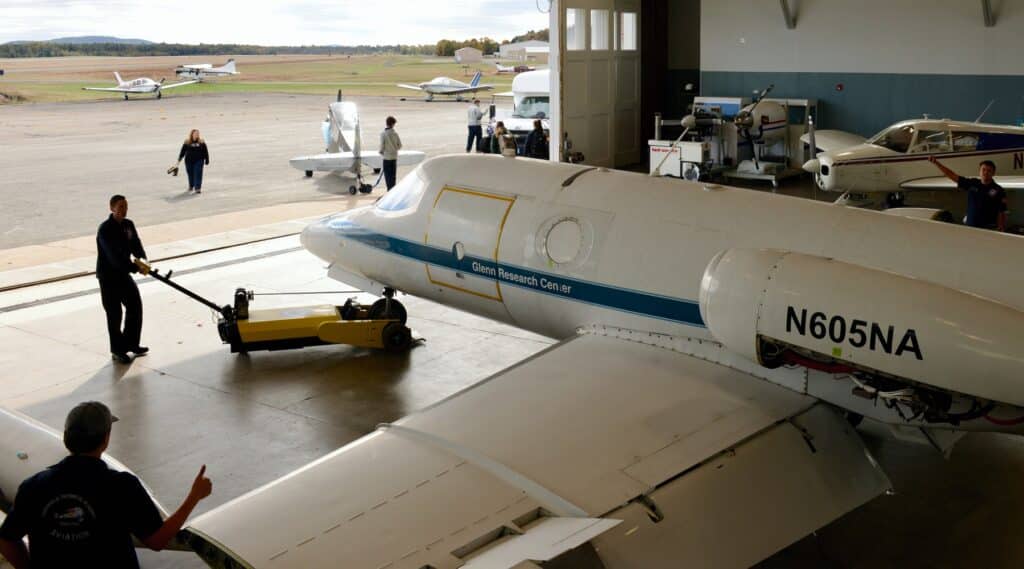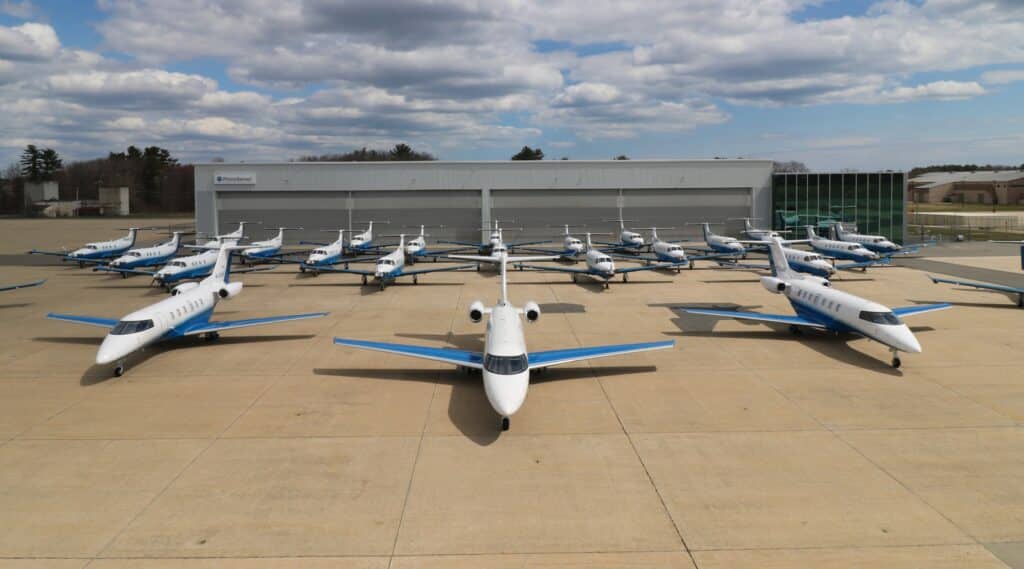There isn’t just a shortage of pilots. Airlines and air travel are also faced with a shortage of another critical profession in the aviation industry: A&P mechanics.
In a recent report released by Boeing “Pilot and Technician Outlook 2022-2041,” it is predicted that over the next 20 years, 610,000 new technicians will be needed to meet demand for fleet operators and providers of maintenance, repair, and overhauls services. These technicians (airframe and powerplant mechanics, or A&P mechanics) learn specifically how to take care of, repair, and maintain aircraft. The latest idea to get mechanically-gifted minds interested in working on planes to fulfill this shortage is to build aviation education centers where they can learn and practice right on the airports – a vocational school with a specific niche. But will it work?
What A&P Mechanics Do
In the Northeast, most A&P mechanics spend their time in Fixed Based Operators (FBOs) which is basically a full-service facility with mechanics in it, and it’s also the service provider that fuels the plane when it lands. The issue is that not all FBOs have A&P capability. It’s actually the reason some airlines or pilots go to do different states – to get more services.
The idea, then, is to build aviation technical centers or schools to attract people who want to learn airplane mechanics. Not only would this offer better services to pilots looking to service their planes, but it would also be revenue generation for the airport. After all, a developer would need to come to the airport to build the center, and then the airport would get a land lease for the building. It would also have positive aspects for the local economy, providing jobs and opportunities where before there was a void. It is a winning strategy for all parties.
Considerations Before Blueprints
If all it would take is building educational centers to fix the lack of A&P mechanics, why haven’t they already been built? While there are plenty of positives for these centers, there are also murky waters and questions before throwing down blueprints. Considerations have to be made.
The first consideration is making sure the demand is actually there before building a large facility that would cost a lot to power and heat. Other states may have better tax incentives to build these facilities – especially in Southern states where winters are milder and pilots are more apt to fly nearly year-round. Another consideration is making sure that the facility can be multi-purpose; if not all the seats can be filled with eager pupils, the building will need to play host to other opportunities.
Aviation Tech Centers in Action

So building an aviation technical center isn’t a sure solution to the problem. However, it’s also not a brand-new idea. Take, for instance, the Westfield Technical Academy Aviation Technology Program in Westfield, Massachusetts. The program is led by Galen Wilson, a retired USAF Chief Master Sergeant. Mr. Wilson explains that there is so much interest in this high school program that approximately 80% of the students that aspired to aviation careers did not secure a position due to the restricted class size of 14 students. Providing these students with a marketable career right out of high school is the key to this program, as it has gone through the rigorous accreditation process as required by FAA Part 147 Aircraft Maintenance Technician (AMT). Many other schools pursue similar goals, but Mr. Wilson feels strongly that designing a program without this certification falls short of the ultimate goal which is to graduate students directly into the aviation industry with AMT licensure.
Programs like this will feed businesses such as PlaneSense, Inc. and its maintenance subsidiary, Atlas Aircraft Center, Inc., headquartered in Portsmouth, New Hampshire. This is an established and growing fractional aircraft ownership company, caring for over 50 turboprop and jet aircraft that fly all over North America. Todd Smith, Vice President of Service and Director of Airworthiness, feels this concept would help with the development of young talent within the local aviation community.
“The industry has changed so much over the years,” Todd said, “we need to think of programs like this to support the future A&P needs. We maintain our aircraft at the highest levels in aviation. As we continue to grow, so will our need for highly trained licensed AMTs, and they are key players allowing us to serve our customers who fly to so many destinations.”
There is a great need for the aviation industry in New England to train exceptional individuals for all roles, from pilots to mechanics and beyond. A technical education center could be a steppingstone to empowering the work force, creating jobs, and bolstering our airports. Airport Planners and Engineers at Hoyle Tanner have seen a marked uptick in Aviation Education Centers and Research Centers, lending to the notion that the industry has recognized the shortage of A&P mechanics, and the proven opportunity that is available if a well-planned program and facility is built at an airport. Reach out to me if you or someone you know is interested in an aviation career!










